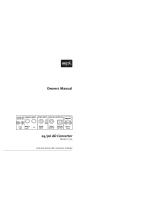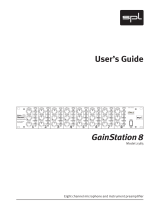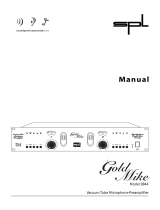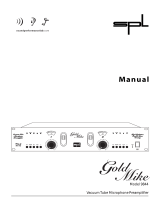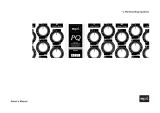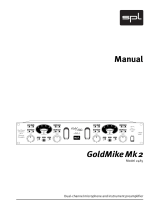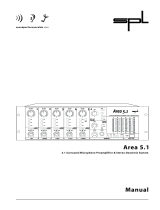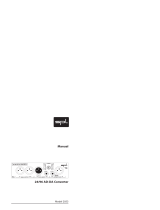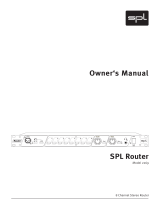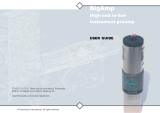
4
GainStation 1
Introduction
Input makes all the difference.
Modern audio production relies increasingly on digital systems
for recording and mixing processes (DAW‘s, digital consoles
etc.). The advantages of digital audio are manifold and include
affordable storage, comfortable editing, recall capabilities and
automation. On the downside, digital systems still do not
offer the same audio qualities and sound characteristics of
high-end analog equipment. Especially digital equalizers and
other aspects of the mixing domain cannot compete with the
open, transparent sound of the best analog gear. So today
more than ever, your input signal has to sound as good as
possible—the quality of your original tracks will largely define
the end result. Lifeless or dynamically lacking signals are often
over-processed with EQ, compression and other effects in an
attempt to compensate—often an extremely tedious process
in the digital domain that doesn‘t always produce the desired
results.
Attacking this problem on the preamplification front, with the
goal of noticeably improving a signal and sending it along its
path with a healthy foundation, requires a great deal of thought
and engineering effort. To this end, the GainStation 1 employs
technologies that not only satisfy test equipment, but also—and
most importantly—the user. Components and circuits were care-
fully chosen and designed on the basis of extensive measure-
ments and listening tests. In short, developing the GainStation 1
was a major undertaking that required immense amounts of
time and experience.
Another important goal in designing the GainStation 1 was that
the case itself should optimally adapt itself to modern produc-
tion environments. It was to be as compact as possible, allo-
wing easy transport and ergonomic placement in virtually any
situation. A free-standing case which does not need to be rack-
mounted has several advantages: not only are the inputs and
outputs always easily accessible, but the unit can also easily be
placed on top of an amp, outboard rack or even some keyboards,
on your desk next to your laptop, or in direct proximity to
a microphone to allow for maximum operational comfort and
minimum cable lengths.




















